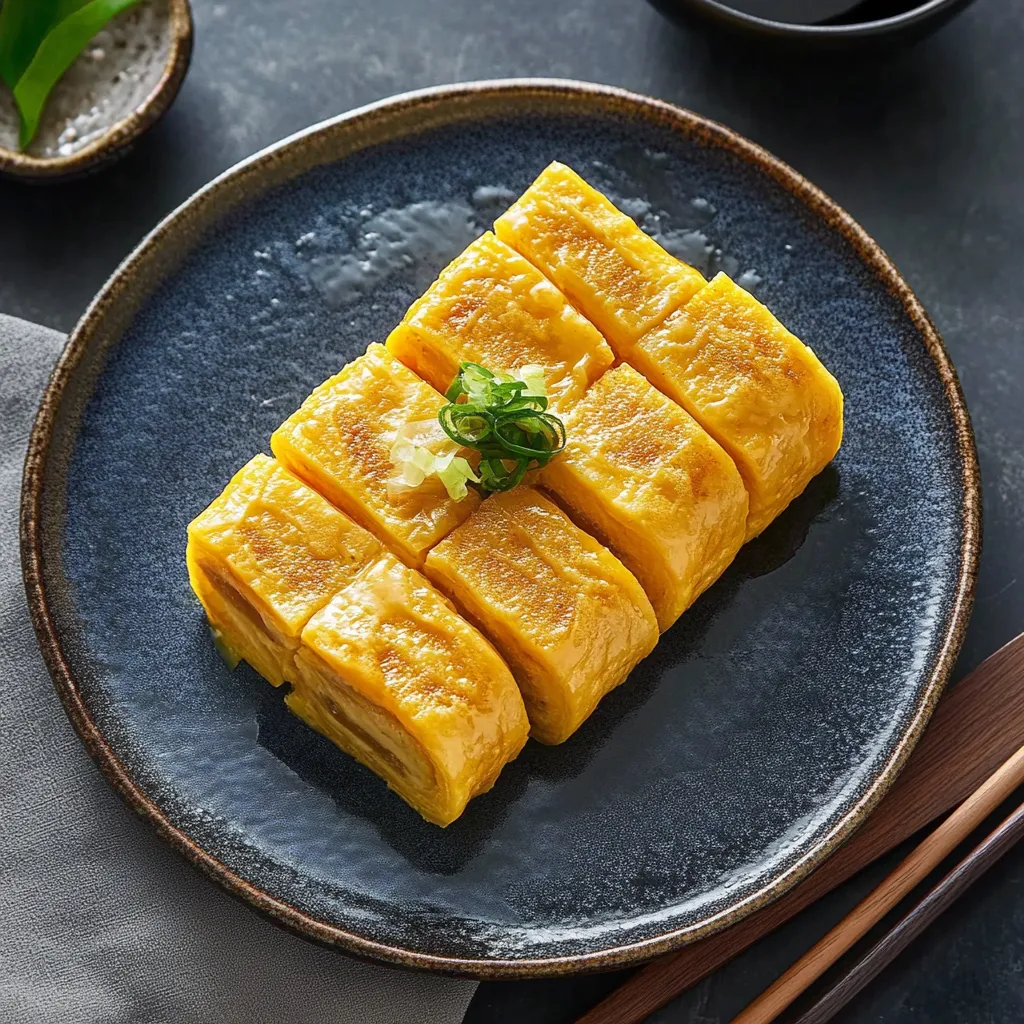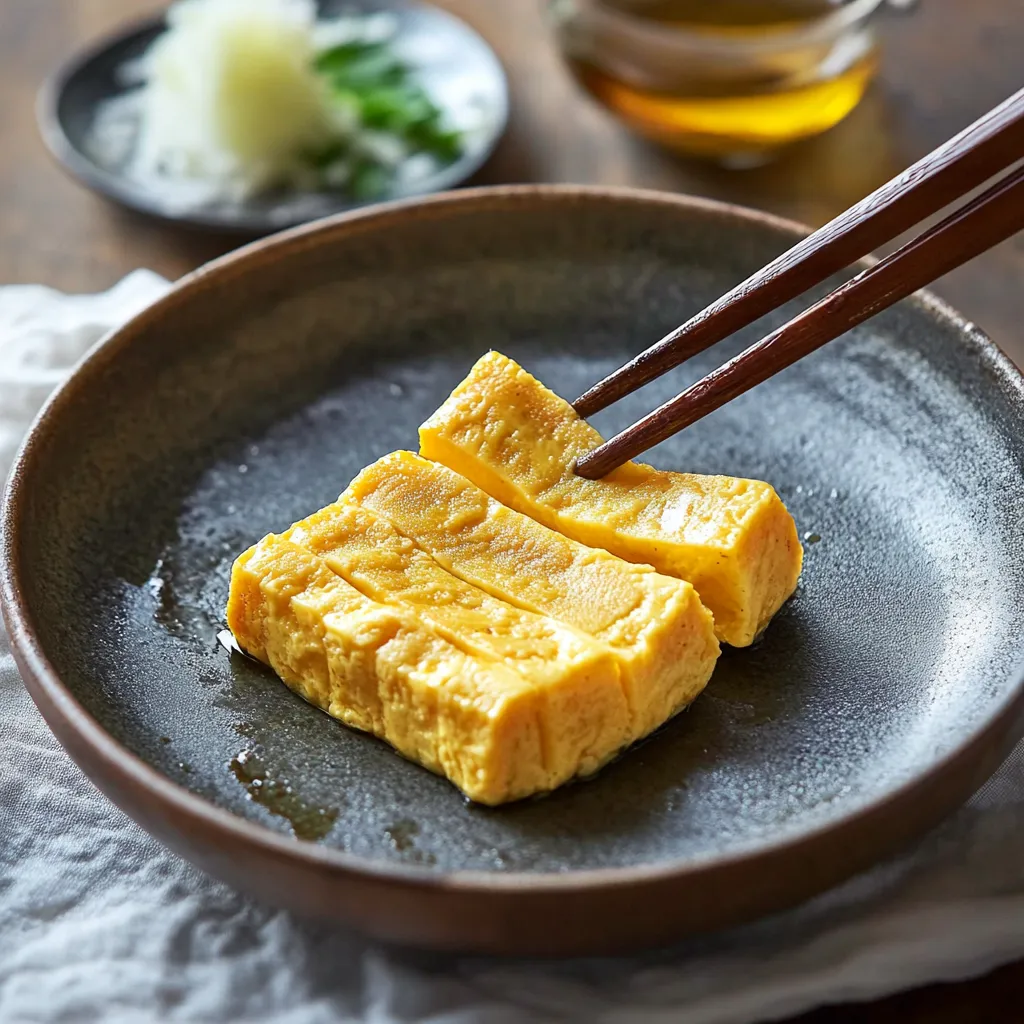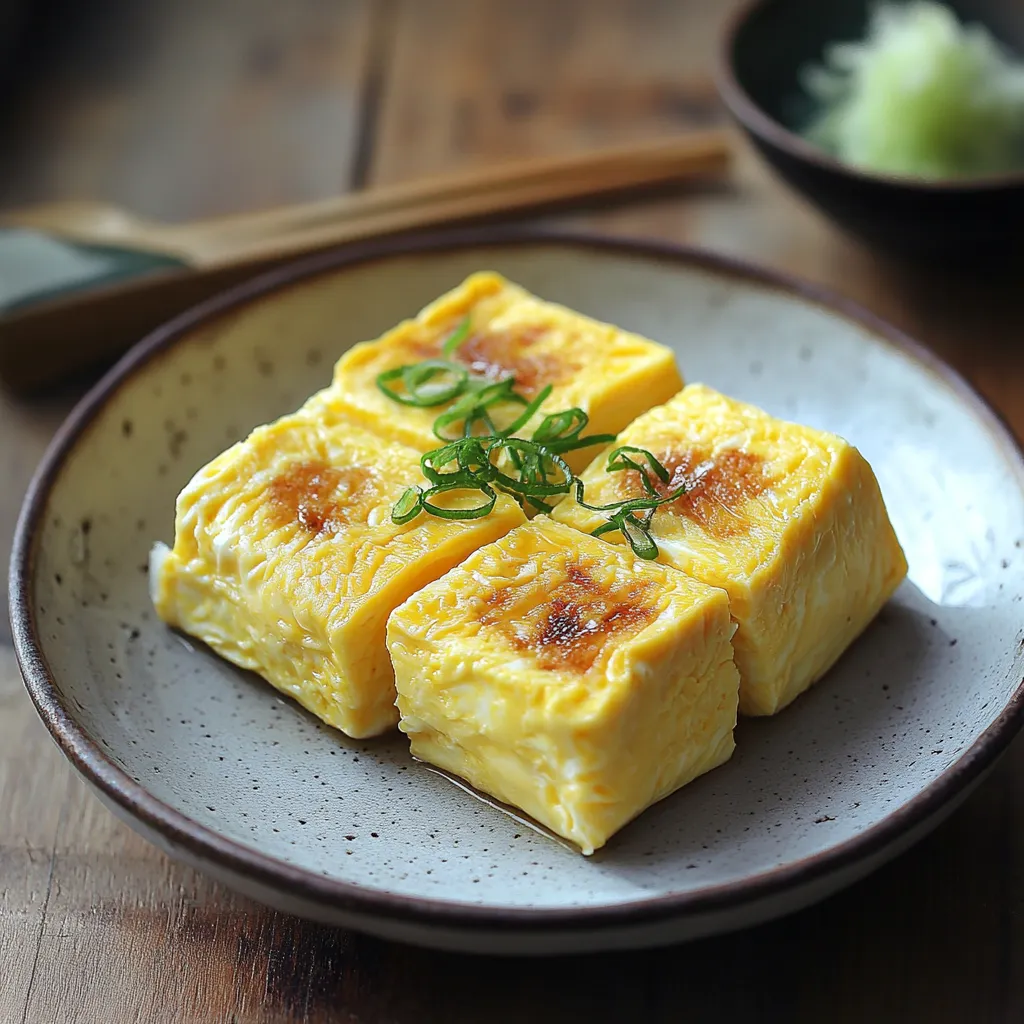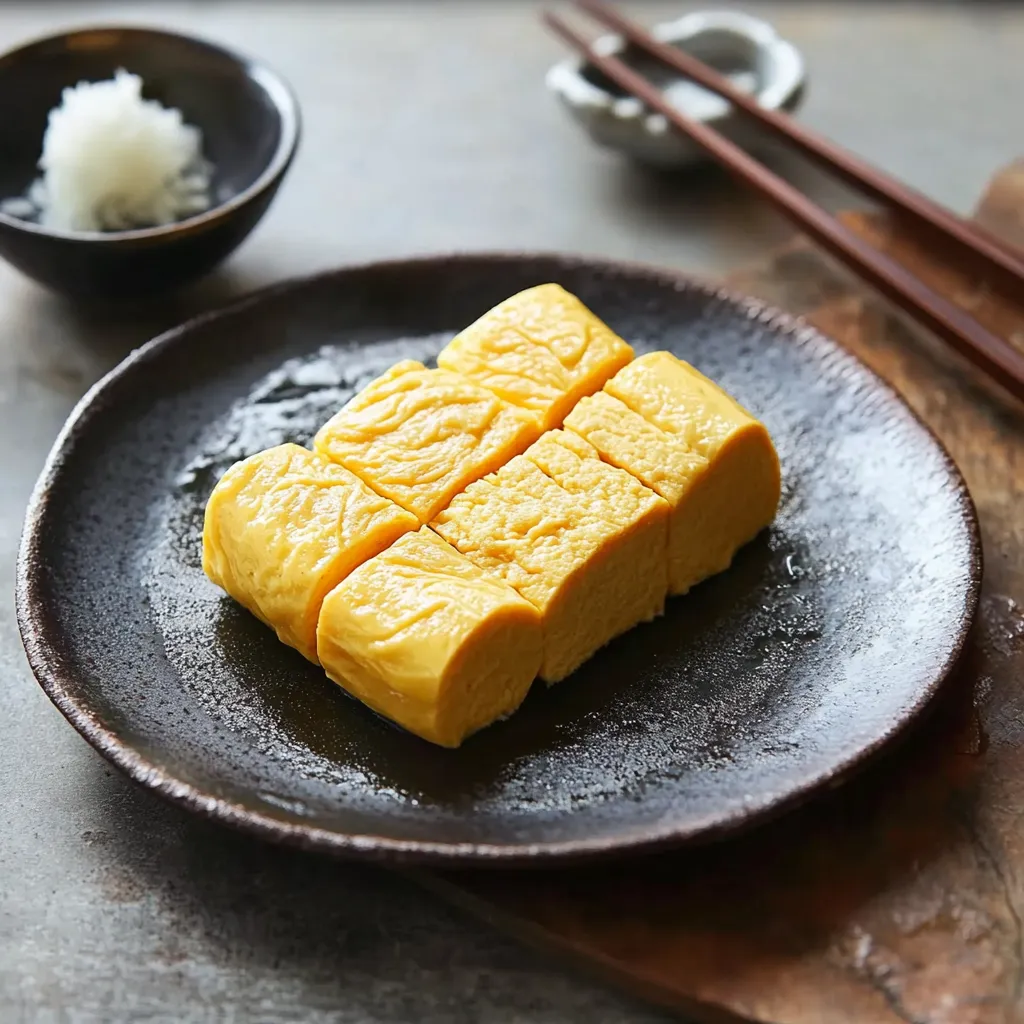 Pin it
Pin it
Making tamagoyaki is all about finding that sweet spot between temperature, timing, and method. After spending countless hours perfecting this Japanese rolled omelet, I've learned that what makes it special isn't just what goes into it, but the peaceful rhythm of building those beautiful golden layers. Every fold adds to the previous one, resulting in something that looks amazing and tastes even better.
I made this for some friends at a Japanese-themed breakfast gathering last week. Everyone was glued to the pan watching as I built each layer. Want to know my trick? It's all about understanding how heat and timing work together to get those custardy, tender layers just right.
Key Ingredients and Smart Shopping Advice
- Eggs: Let them sit out till they reach room temperature for smoother mixing and cooking.
- Mirin: Grab a high-quality bottle for that true authentic taste.
- Dashi: Nothing beats making it from scratch, but the instant stuff works when you're short on time.
- Soy Sauce: Pick up Japanese varieties for that perfect mix of saltiness and umami.
 Pin it
Pin it
The Wonderful Preparation Process
- Get your egg mix ready:
- Break eggs with care and mix softly using chopsticks or a fork until barely combined. Slowly add your sugar, mirin, and soy sauce while cutting through the mixture.
- Run it through a strainer:
- Pour the egg mix through a fine mesh sieve to get that ultra-smooth consistency.
 Pin it
Pin it
Nailing the Perfect Heat
Getting your pan temperature just right is key. Go with medium-low heat to start and check it by dropping a tiny bit of egg mix in - it should sizzle softly without cooking instantly. Keep tweaking the heat as needed while you cook.
Creating One Layer After Another
Add a thin coating of egg mixture to your pan. When it starts to set, carefully use chopsticks or a spatula to lift one edge and fold it over itself. Move the roll back to where you started and pour the next layer, making sure it smoothly connects with your first roll.
Must-Know Cooking Tricks
Japanese Food Heritage
In Japan, tamagoyaki isn't just food - it's a staple from family breakfast tables to fancy sushi spots. Many see it as a way to judge a chef's skills since it needs such careful attention. Different parts of Japan make it their own way - some folks prefer it sweeter while others like it more savory.
Plating and Enjoyment
- Pair with a bowl of rice, some miso soup, and pickled veggies for a classic morning meal.
- Try something new by cutting it super thin and arranging it at an angle on a long plate with some grated daikon and soy on the side.
Getting Heat and Timing Just Right
Your heat should be low enough to avoid browning but hot enough that each layer sets quickly. Give each layer about 30-45 seconds to firm up, and let your finished roll sit for five minutes before slicing. It tastes best warm or at room temp for maximum flavor and perfect texture.
Changing With The Seasons
- Spring: Mix in some fresh shiso for brightness.
- Summer: Toss in chopped tomatoes or sweet corn kernels.
- Fall: Add some sliced mushrooms or chrysanthemum greens.
- Winter: Mix in some spinach or nori sheets for deeper flavors.
Learning Moments in Cooking
 Pin it
Pin it
Making tamagoyaki teaches you so many cooking basics - like managing heat, understanding how proteins set up, and building muscle memory through repeated movements. These skills boost your overall kitchen confidence and make you better at cooking everything else too.
Stocking Up On Japanese Essentials
- Get yourself some Japanese soy sauce, mirin, and sake for real authentic flavor.
- Have kombu seaweed and katsuobushi flakes on hand to make your own dashi.
- Try different types of seaweed as garnishes and flavor boosters.
Closing Thoughts and Reflections
What makes tamagoyaki so special is how basic yet precise it is. Each roll adds more flavor and shows off your growing skills, highlighting what makes Japanese cooking so elegant. Whether it's for a special breakfast or mixed into fusion dishes, making tamagoyaki teaches you patience, technique, and how beautiful simple ingredients can be.
After making this dish hundreds of times, I've realized tamagoyaki isn't just food - it's a way to grow as a cook. Getting good at this doesn't just add another recipe to your collection; it changes how you think about cooking and helps you appreciate the calm focus needed to create something truly special.
Frequently Asked Questions
- → Can I skip the special tamagoyaki pan?
- A rectangular pan is traditional, but a small round nonstick pan works just fine.
- → Is dashi a must-have ingredient?
- No, you can leave it out, but it enhances the umami flavor of the omelette.
- → Why doesn't my tamagoyaki stay bright yellow?
- Use medium-low heat to avoid browning the eggs and keep their beautiful yellow color.
- → How do I make it less sweet?
- Just cut back on the sugar or skip it altogether based on your personal taste.
- → What's the best way to store leftover tamagoyaki?
- Refrigerate in a sealed container for up to four days and serve at room temperature.
